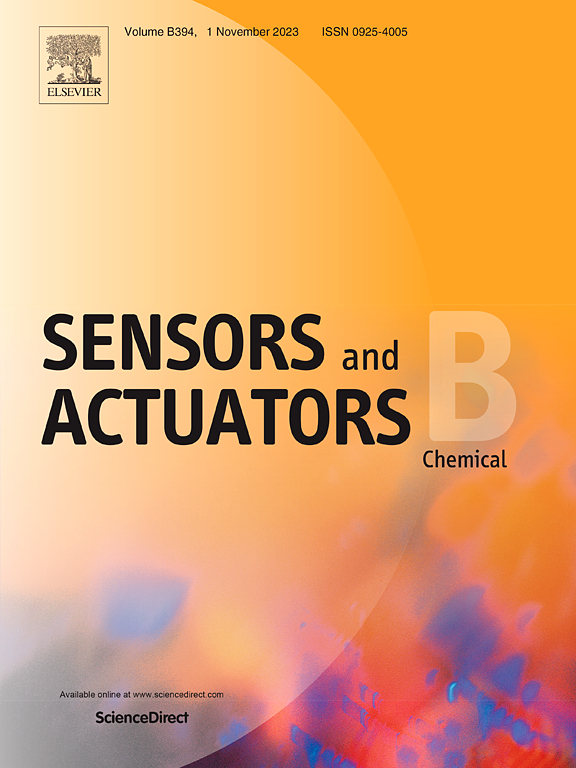SnO2加热器/碳纳米管气体传感器结构对NO2气体的鲁棒响应
IF 8
1区 化学
Q1 CHEMISTRY, ANALYTICAL
引用次数: 0
摘要
二氧化氮(NO2)是一种有害的空气污染物,主要来自汽车尾气和工业过程,它对健康构成重大威胁。该研究通过将透明碳纳米管(CNT)气体传感器与基于sno2的忆阻加热器(MH)集成在一起,提出了一种可靠的NO₂检测解决方案。首先,在不同厚度(100-200 nm)下,对sno2基MH的加热能力和气敏性进行了评估,以优化性能。研究结果表明,175 nm sno2基MH具有最高的灵敏度,在20 ppm和0.5 ppm下的响应分别为40.69 %和19.42 %。此外,与传统的zno基MH相比,SnO2具有更好的热稳定性和更低的可变性,可以保证50次循环的稳定性能。这些结果强调了基于sno2的MH在下一代气体传感器中的潜力,为工业安全应用提供了更高的灵敏度、耐用性和可靠性。本文章由计算机程序翻译,如有差异,请以英文原文为准。
Robust response to NO2 gas on SnO2 heater/CNT gas sensor structures
Nitrogen dioxide (NO2) is a harmful air pollutant, which is primarily emitted from vehicle exhausts and industrial processes, and it poses significant health risks. This study presents a reliable solution for the detection of NO₂ by integrating a transparent carbon nanotube (CNT) gas sensor with an SnO2-based memristor heater (MH). First, the heating capabilities and gas sensitivity of the SnO2-based MH are evaluated at varying thicknesses (100–200 nm) to optimize performance. The findings of the study indicate that the 175 nm SnO2-based MH exhibited the highest sensitivity, which included a 40.69 % response at 20 ppm and a 19.42 % response at 0.5 ppm. Furthermore, SnO2 demonstrates superior thermal stability and reduced variability compared to conventional ZnO-based MH, which guarantees a consistent performance for 50 cycles. These results underscore the potential of SnO2-based MH for next-generation gas sensors, which provide improved sensitivity, durability, and reliability for industrial safety applications.
求助全文
通过发布文献求助,成功后即可免费获取论文全文。
去求助
来源期刊

Sensors and Actuators B: Chemical
工程技术-电化学
CiteScore
14.60
自引率
11.90%
发文量
1776
审稿时长
3.2 months
期刊介绍:
Sensors & Actuators, B: Chemical is an international journal focused on the research and development of chemical transducers. It covers chemical sensors and biosensors, chemical actuators, and analytical microsystems. The journal is interdisciplinary, aiming to publish original works showcasing substantial advancements beyond the current state of the art in these fields, with practical applicability to solving meaningful analytical problems. Review articles are accepted by invitation from an Editor of the journal.
 求助内容:
求助内容: 应助结果提醒方式:
应助结果提醒方式:


